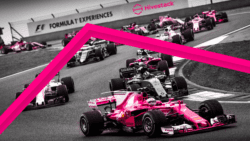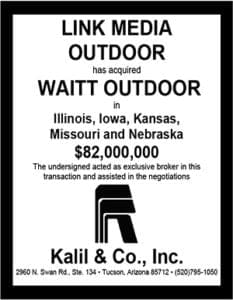 By Ginny Bourne, Global Marketing and Communications Director, Hivestack
By Ginny Bourne, Global Marketing and Communications Director, Hivestack
Formula 1, a truly global spectacle, is set to captivate audiences across the world once again. In 2023, racing enthusiasts, teams, and fans will traverse over 20 countries and five continents to witness fierce competition for the championship title. The surge in Formula 1’s popularity in the United States, partly fueled by the Netflix series “Drive to Survive,” has made the 2022 season the most-watched ever by US viewers.
This surge in viewership has attracted brands, with ESPN reporting a staggering 163% increase in ad revenue compared to the previous year. With three races scheduled in the US for 2023, advertisers are eager to connect with the jet-setting fans. However, in this high-speed sport, standing out amidst the competition and the roar of race cars is a formidable challenge. To address this, advertisers can turn to programmatic digital out-of-home (DOOH) advertising.
Embracing Data-Driven Programmatic DOOH
Surprisingly, Formula 1 and programmatic DOOH share common ground. Both capture audiences’ attention, whether through the deafening roar of an F1 car or attention-grabbing DOOH activations, such as Gorillaz’s groundbreaking performance on Times Square billboards. Furthermore, both rely on data-driven strategies for success. Formula 1 teams employ analysts, scientists, and engineers to enhance their performance, while programmatic DOOH empowers marketers with data-driven insights for campaign optimization.
Unlike traditional DOOH, which requires weeks of negotiation, programmatic DOOH employs an auction-based buying method. Leveraging diverse data sources and machine learning, marketers can purchase ad slots with the speed of a Formula 1 driver. They can fine-tune campaigns based on audience demographics, behavioral data, and location data, ensuring precision and targeted reach.
 Maximizing Opportunities with Programmatic DOOH
Maximizing Opportunities with Programmatic DOOH
Success in Formula 1 hinges on making timely pit stops and adjustments to maximize performance. Similarly, programmatic DOOH’s data-driven approach offers marketers the flexibility to adapt campaigns in real-time. By harnessing insights, marketers can redirect their spending to more productive locations and times, thereby optimizing impressions for each ad play.
Seizing Key Moments with Precision
Timing is everything on the racetrack, and programmatic DOOH allows marketers to be in the right place at the right time. This approach transforms targeting from one-to-many to one-to-select-many. With unique audience data, messages are delivered when a relevant audience is near the screen. Marketers can also target specific geographic areas or points of interest, ensuring promotions align with the Formula 1 events happening in various cities worldwide. By using custom API triggers, brands can capitalize on important race moments, such as the current leader or pit stops, enhancing contextual relevance and audience engagement.
Uniting DOOH in the Omnichannel Mix
Just as Formula 1 drivers rely on their teams for success, modern marketing thrives on a collaborative approach. In today’s macroeconomic landscape, reaching audiences demands an omnichannel strategy for cohesive and holistic campaigns. Programmatic DOOH seamlessly bridges the gap between online and offline environments, making it an essential component of any advertiser’s marketing strategy.
As Formula 1’s global audience continues to grow, marketers must remain flexible, precise, and efficient to keep pace with the action. Programmatic DOOH, with its attention-grabbing capabilities, granular measurement, and seamless integration into omnichannel campaigns, positions brands at the forefront of this year’s Formula 1 tournament.
To receive a free morning newsletter with each day’s Billboard insider articles email info@billboardinsider.com with the word “Subscribe” in the title. Our newsletter is free and we don’t sell our subscriber list.
Paid Advertisement

















